In This Week’s Star
- NASA’s Space Launch System Design ‘Right on Track’ for Journey to Mars
- Construction ‘Fueling’ Up for SLS Core Stage Hydrogen Tank
- Aft Segment Cast for Second SLS Booster Qualification Test
- Marshall Center Hosts Mentor-Protégé Agreement Signings Between Teledyne Brown Engineering and Two Universities
- NASA Honors 13 Marshall Team Members with Silver Snoopy Award
- Astronaut Butch Wilmore Shares Excitement of Space Station Life with Marshall Center
- NASA Associate Administrator Lightfoot Keynotes Marshall Association Luncheon
- Russellville, Alabama, Rocket Team Wins International Challenge; Tours Marshall
- Marshall Hosts Advanced Rocketry Workshop for Student Teams
- New Pluto Discoveries and Images Featured On ‘This Week @NASA’
NASA’s Space Launch System Design ‘Right on Track’ for Journey to Mars
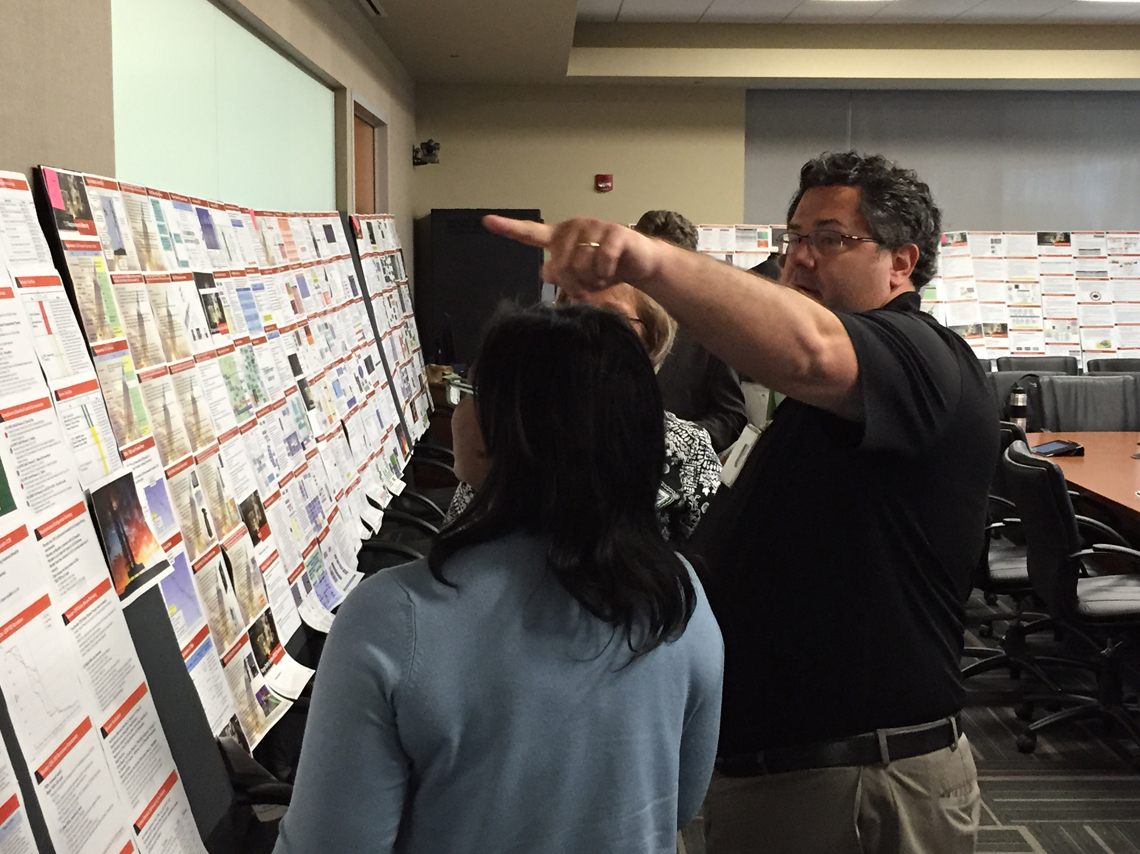
You know the feeling of pride and achievement when you’ve worked really hard on a term paper, and finally turn it in? That’s how the critical design review team for NASA’s Space Launch System is feeling this week as the program completed its review.
The in-depth review — the first in almost 40 years for a NASA exploration class vehicle — provides a final look at the design and development of the integrated rocket before full-scale fabrication begins. Throughout the course of 11 weeks, 13 teams — including representatives from several NASA field centers — reviewed more than 1,000 files of data as part of the comprehensive assessment process.
SLS will be the most powerful rocket ever built for a new era of exploration to destinations beyond Earth’s orbit. It will launch astronauts in the agency’s Orion spacecraft on missions to an asteroid placed in lunar orbit, and eventually to Mars.
“Now that we’ve completed our review, we will brief NASA leadership, along with the independent review team, about the results and readiness to proceed to the next phase. After that step is complete, we’ll move on to design certification,” said Todd May, SLS program manager at NASA’s Marshall Space Flight Center. “Critical design review represents a major commitment by the agency to human exploration, and through these reviews, we ensure the SLS design is on track to being a safe, sustainable and evolvable launch vehicle that will meet the agency’s goals and missions.
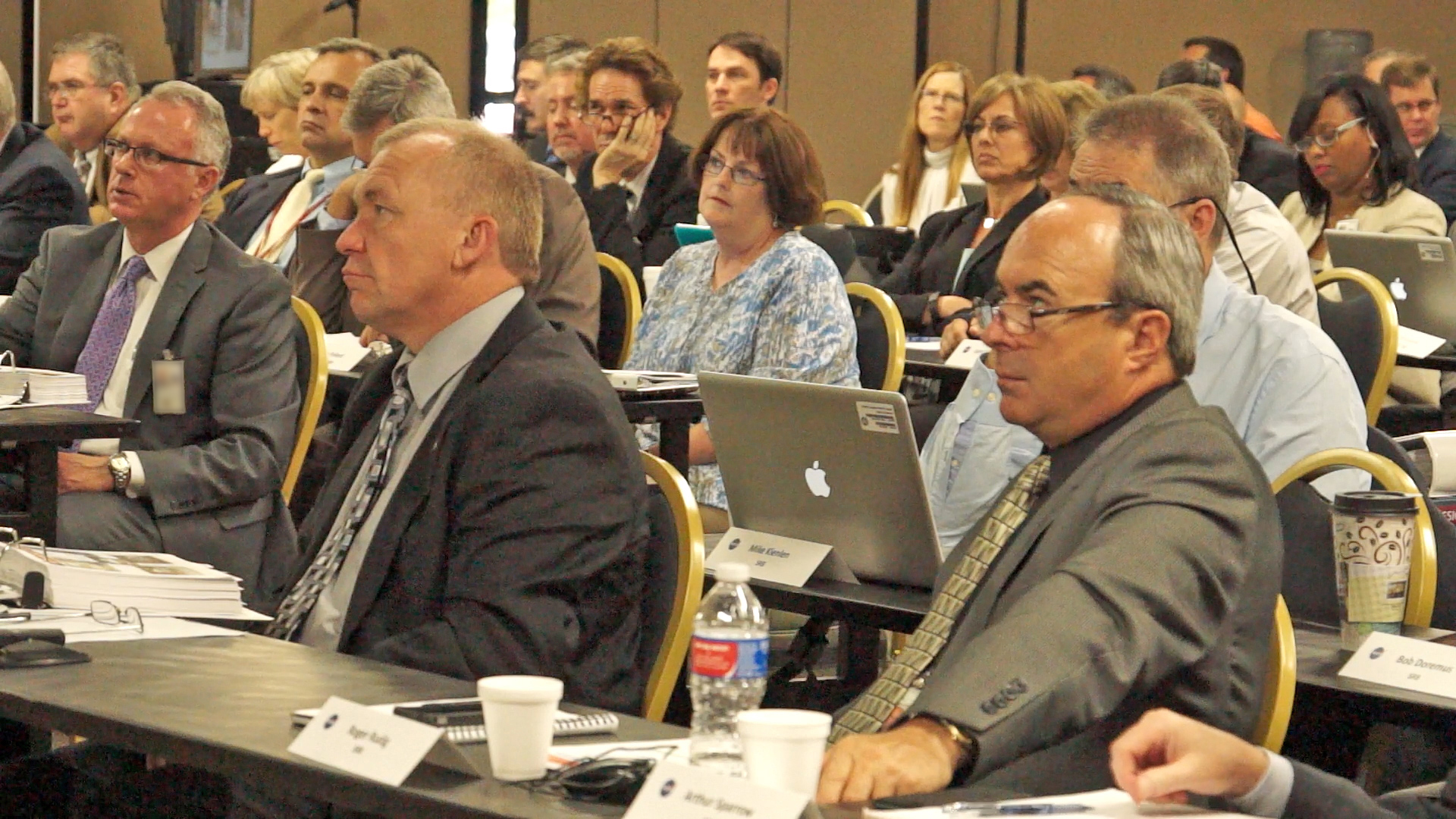
“It’s an exciting time for NASA and our nation,” May continued, “as we prepare to go to places in deep space that we’ve never been before.”
The critical design review is for the first of three configurations planned for SLS, referred to as SLS Block 1. It will stand 322 feet tall, provide 8.4 million pounds of thrust at liftoff, weigh 5.5 million pounds and carry 70 metric tons or 154,000 pounds of payload, equivalent to approximately 77 one-ton pickup trucks’ worth of cargo. Its first mission — Exploration Mission-1 — will launch an uncrewed Orion spacecraft to demonstrate the integrated system performance of the SLS rocket and Orion spacecraft before a crewed flight.
Block 1 requires many critical parts to get it off the ground and safely into space, including twin solid rocket boosters, powerful engines, flight computers, avionics and the core stage. The core stage, towering more than 200 feet tall with a diameter of 27.6 feet, will carry cryogenic liquid hydrogen and liquid oxygen that will feed the vehicle’s four RS-25 engines.
The team turned in its work to a Standing Review Board composed of seasoned experts from NASA and industry who are independent of the program. The board will review and assess the program’s readiness and confirm it remains on target to meet the established schedule and cost goals.
“Much of the benefit of this review is what we do to prepare for it because that’s where we really bring things out,” said Jim Reuter, head of the Standing Review Board. “And you can tell it in the spirit of the people here. They are excited about what they’re doing. They can see that this is the review that’s going to make it real.”
Story continued here.
Construction ‘Fueling’ Up for SLS Core Stage Hydrogen Tank
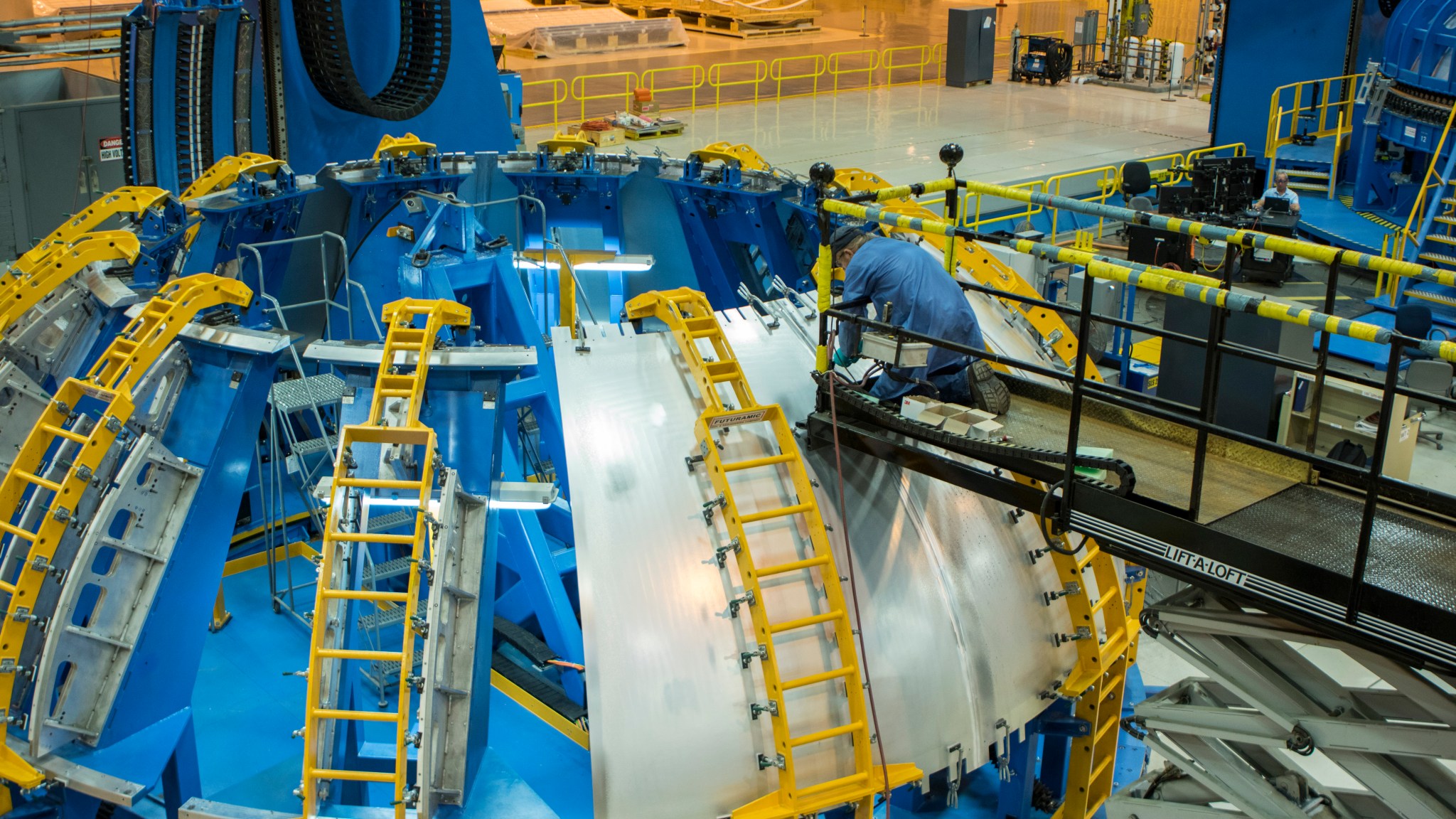
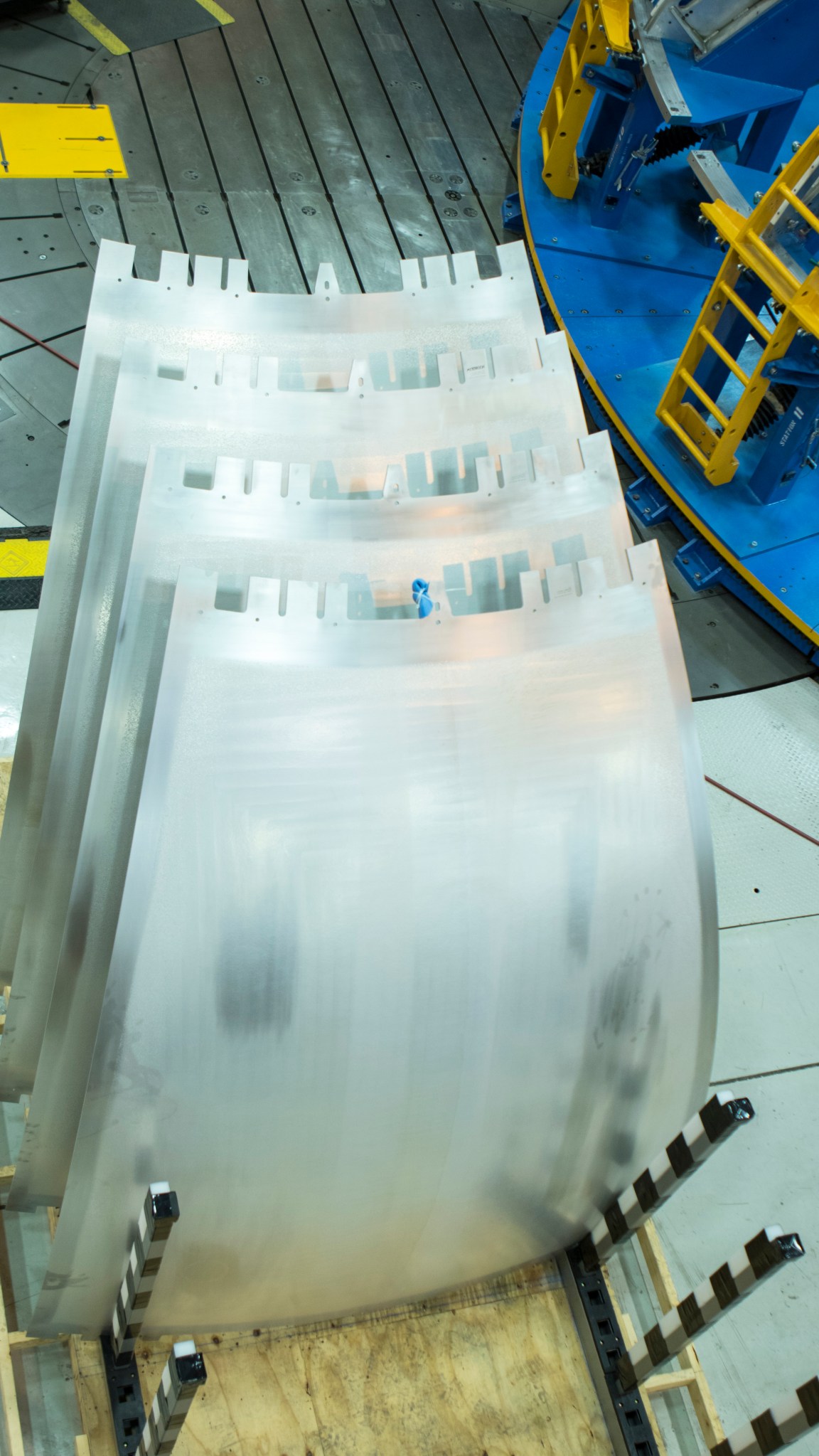
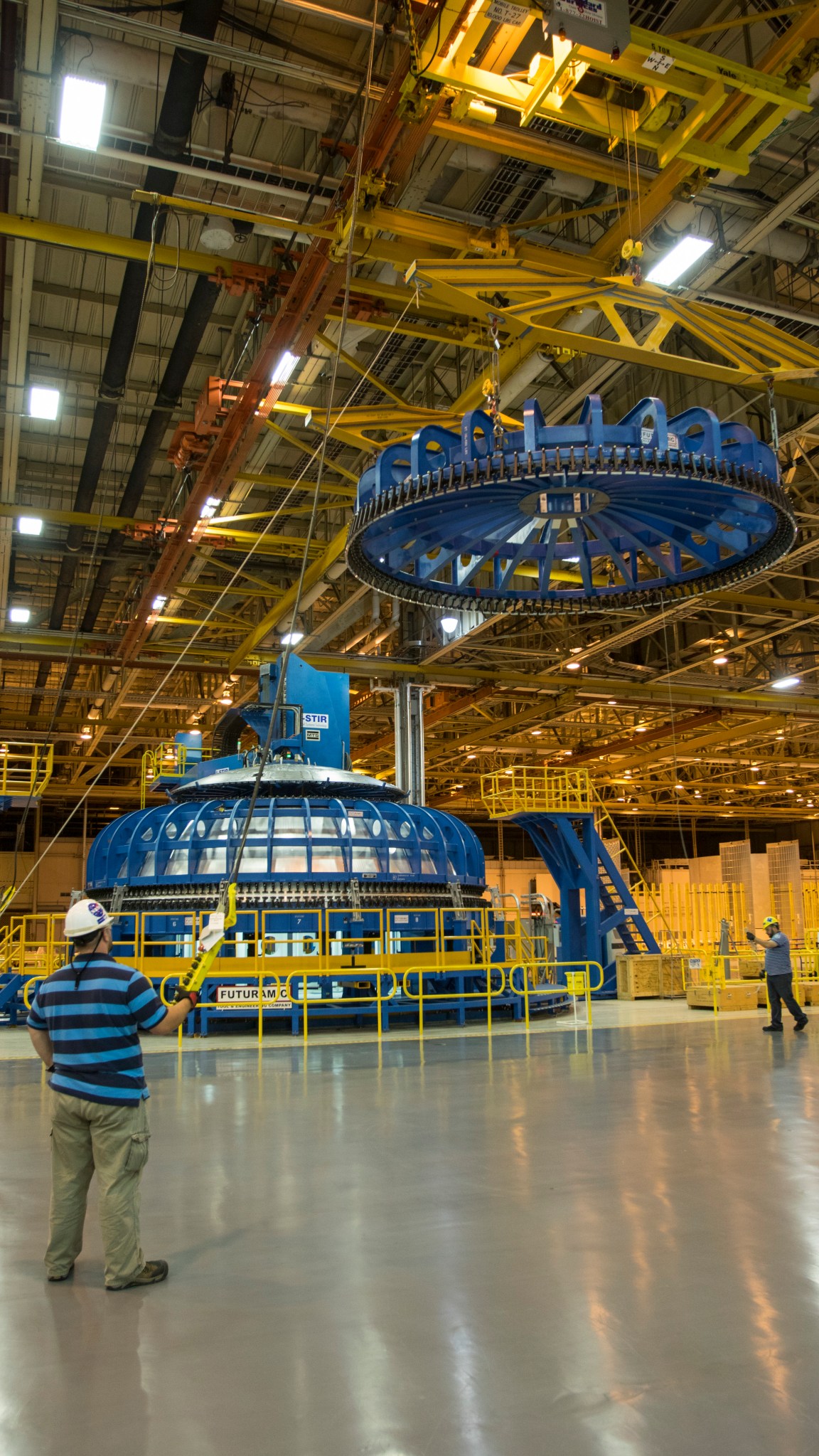
Aft Segment Cast for Second SLS Booster Qualification Test
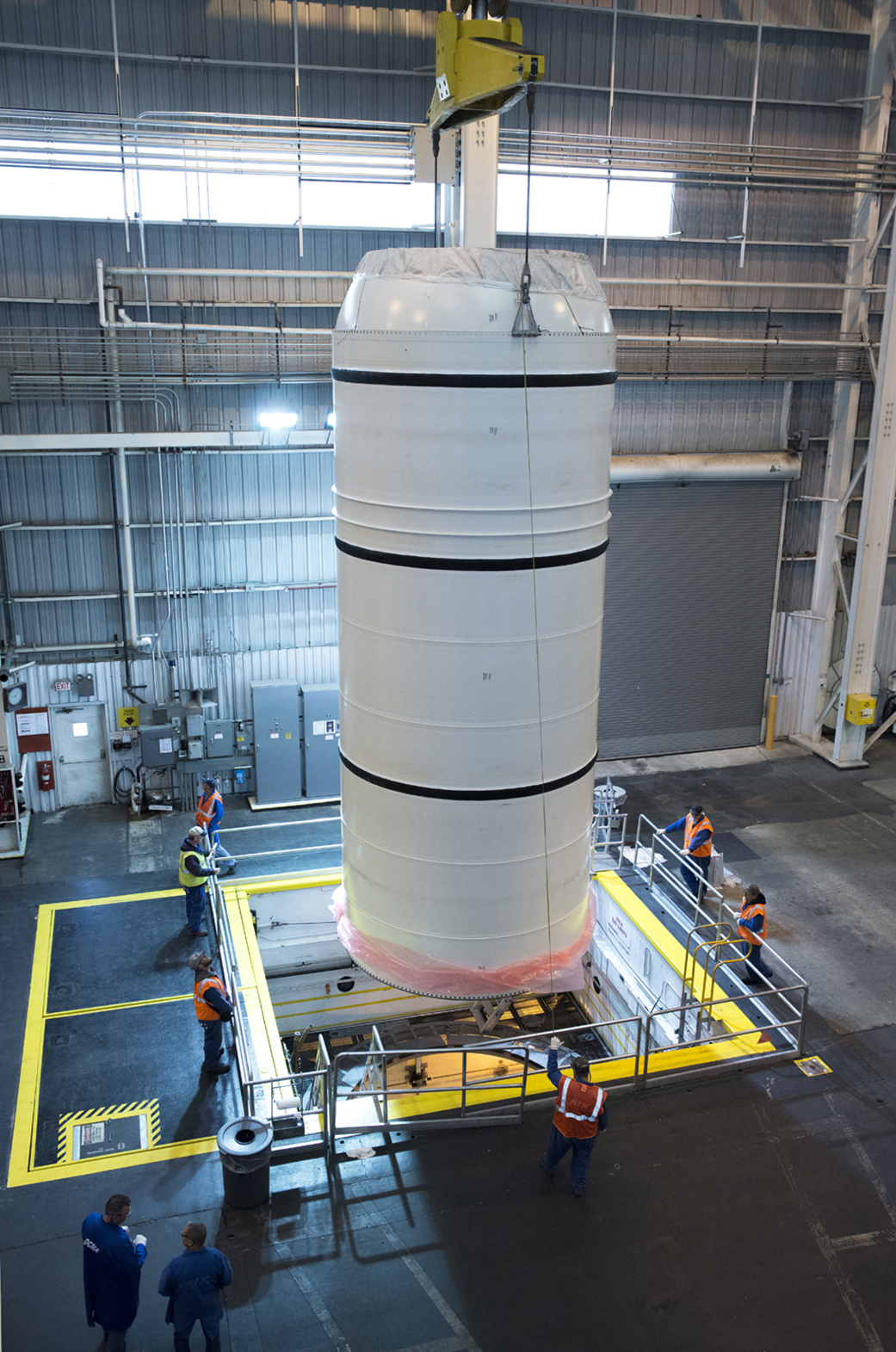
Marshall Center Hosts Mentor-Protégé Agreement Signings Between Teledyne Brown Engineering and Two Universities
By Kenneth Kesner
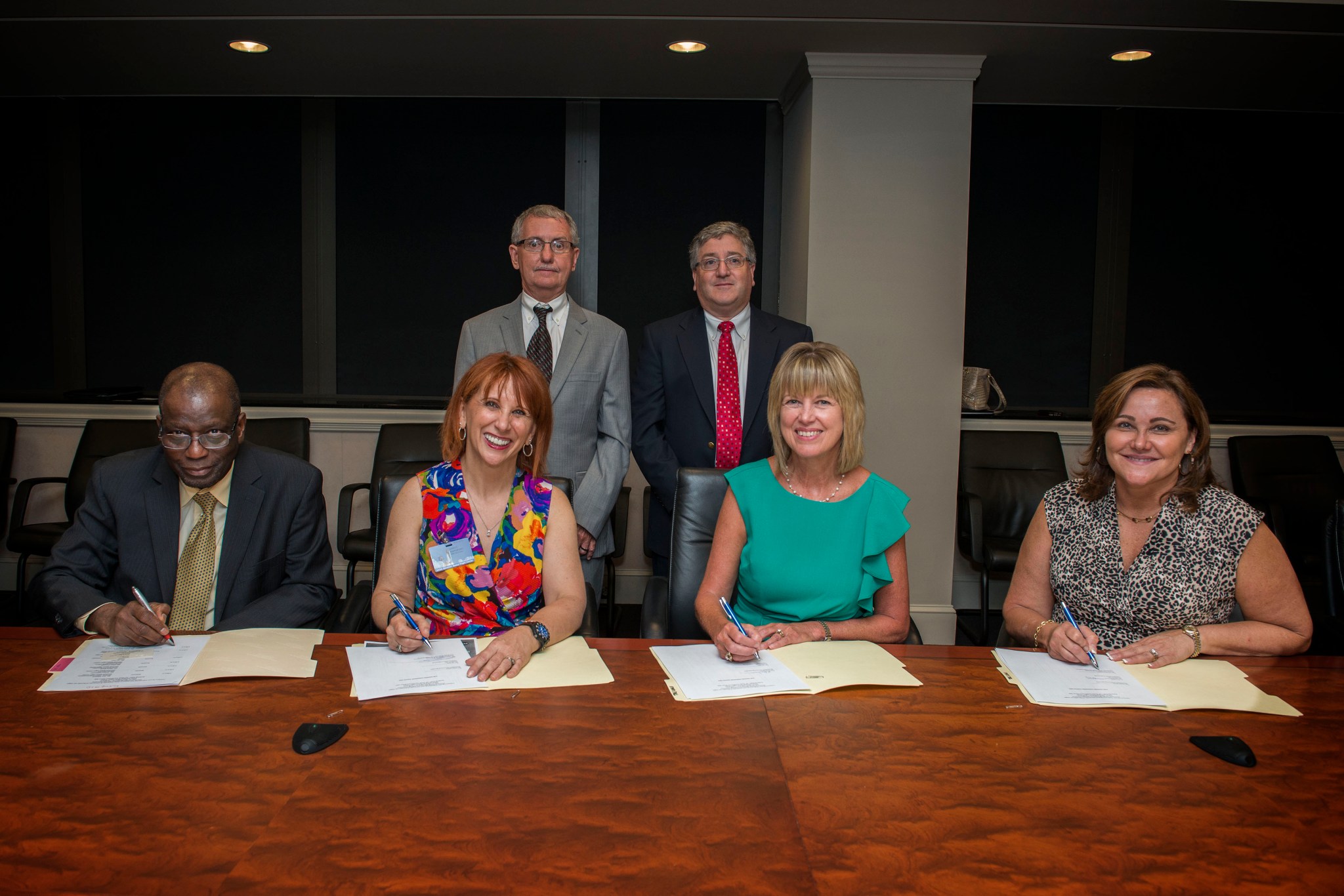
NASA mentor-protégé agreements between Teledyne Brown Engineering of Huntsville and two universities — Alabama State University of Montgomery, and the University of Nevada, Las Vegas — were signed during ceremonies July 27 at NASA’s Marshall Space Flight Center.
Both agreements are under Teledyne’s NASA Mission Operations and Integration Contract. Universities and students participating in this program will receive assistance in developing multimedia training for International Space Station Payload Ground Support Personnel and Payload Developers.
“Today’s signings are part of a long Marshall Center tradition of collaboration with industry and universities,” said Teresa Vanhooser, deputy director of Marshall. “We tend to think of mentoring as a one-on-one relationship that helps develop an individual. But groups like these also benefit tremendously from the mentor-protégé relationship and end up gaining from each other.”
Other speakers at the ceremony included Kim Whitson, director of Marshall’s Office of Procurement; David Brock, Marshall’s small business specialist; Jan Hess, president of Teledyne Brown Engineering; Dwight Mosby and Nicole Pelfrey, both of Teledyne Brown; Leon Wilson of Alabama State University; Nancy Rapoport and Zachary Miles of the University of Nevada, Las Vegas; and Mary Traweek, Marshall’s Mission Operations and Integration Contract Office representative.
The 12-month agreement between Teledyne Brown Engineering and Alabama State University is the fifth such agreement between a Marshall prime contractor and a Historically Black College and University. The 12-month agreement with the University of Nevada, Las Vegas, is the first such agreement between a Marshall prime contractor and a Minority-Serving Institution.
The NASA Mentor-Protégé Program was established in 2008 by NASA’s Office of Small Business Programs. It allows NASA prime contractors opportunities to enter into agreements with small businesses and historically black colleges and universities/minority serving institutions under their subcontracting programs, to establish long-term relationships, enhance technical capabilities and enable protégés to successfully compete for larger, more complex prime contract and subcontract awards. Marshall oversaw NASA’s first Mentor-Protégé signing agreement in February 2008.
Kesner, an ASRC Federal/Analytical Services employee, supports the Office of Strategic Analysis & Communications.
NASA Honors 13 Marshall Team Members with Silver Snoopy Award
On July 28, 13 Marshall Space Flight Center team members were honored with NASA’s Silver Snoopy award for their outstanding achievements related to human flight safety and mission success. The award is presented personally by NASA astronauts, as it represents the astronauts’ own recognition of excellence. Astronaut Michael Barratt and Marshall Director Patrick Scheuermann took part in the presentations. For more information on the award, visit here.
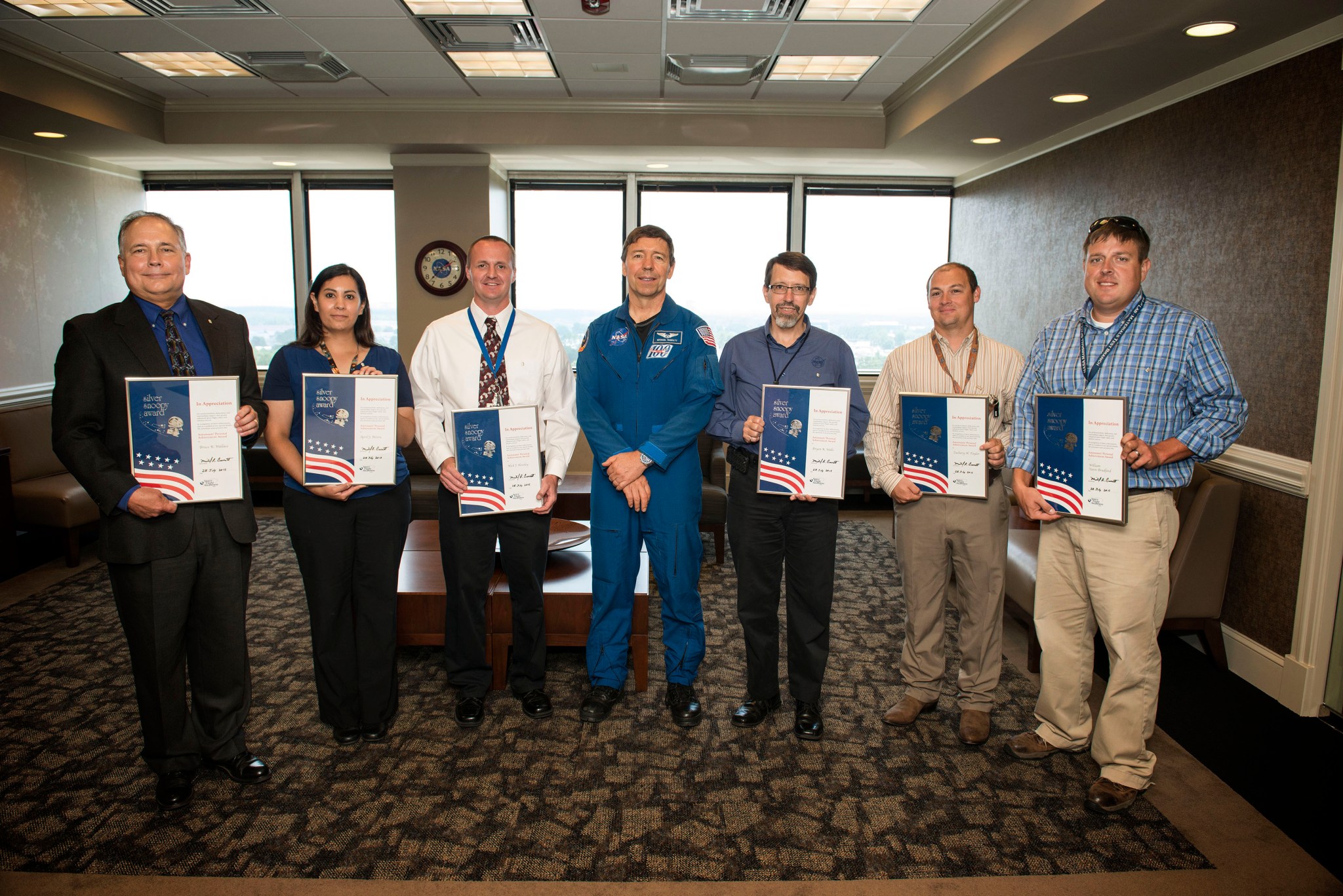
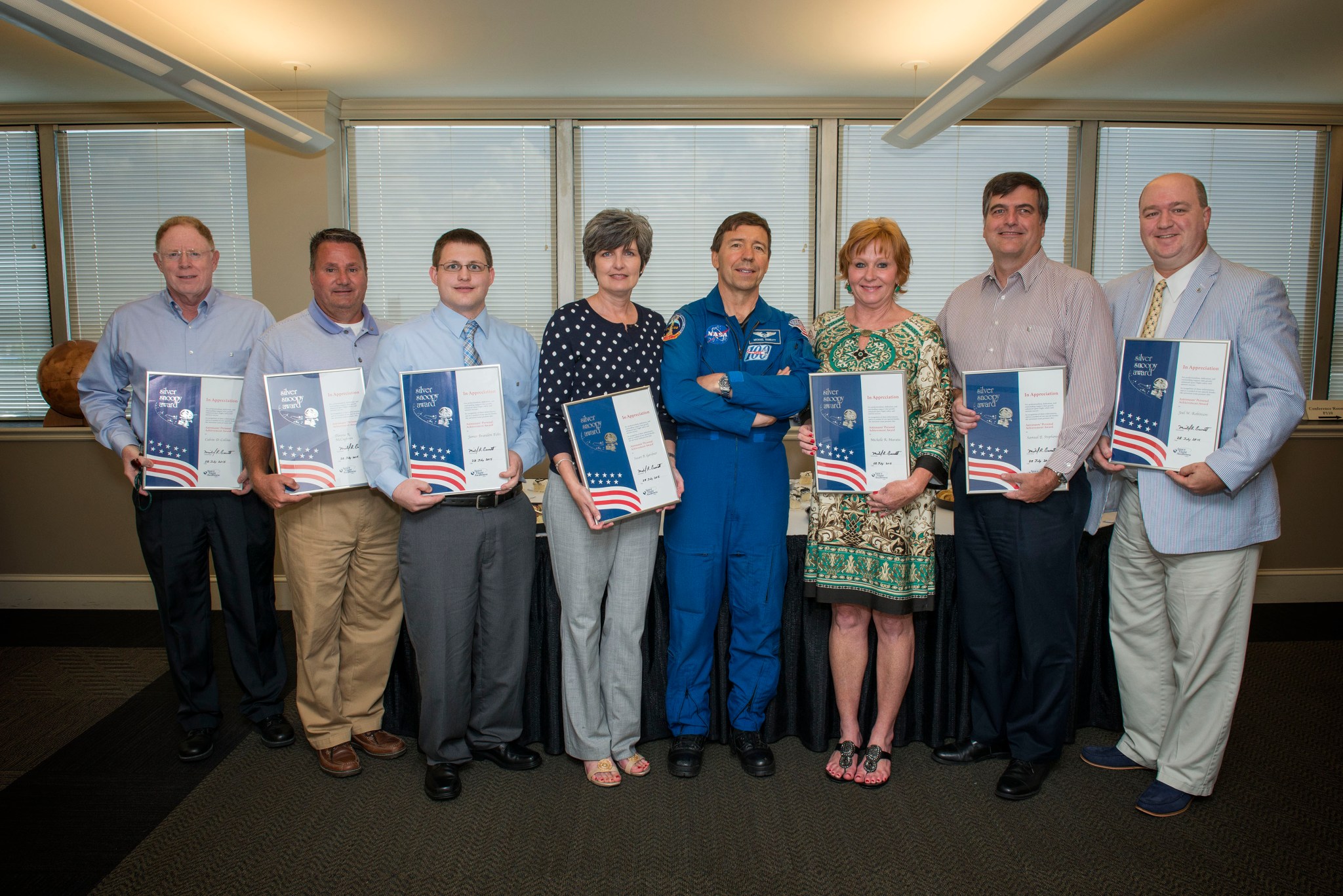
Astronaut Butch Wilmore Shares Excitement of Space Station Life with Marshall Center
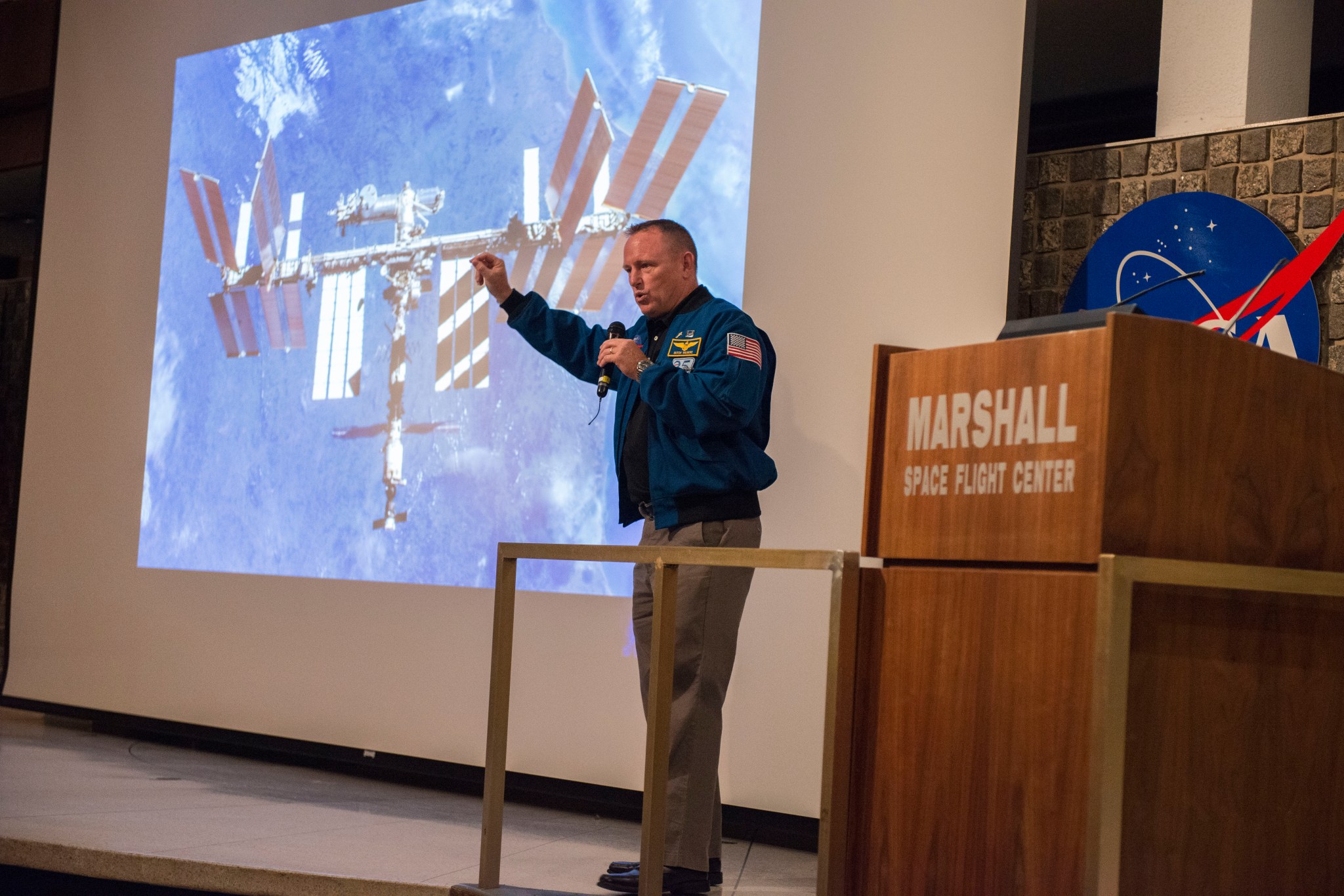
NASA Associate Administrator Lightfoot Keynotes Marshall Association Luncheon
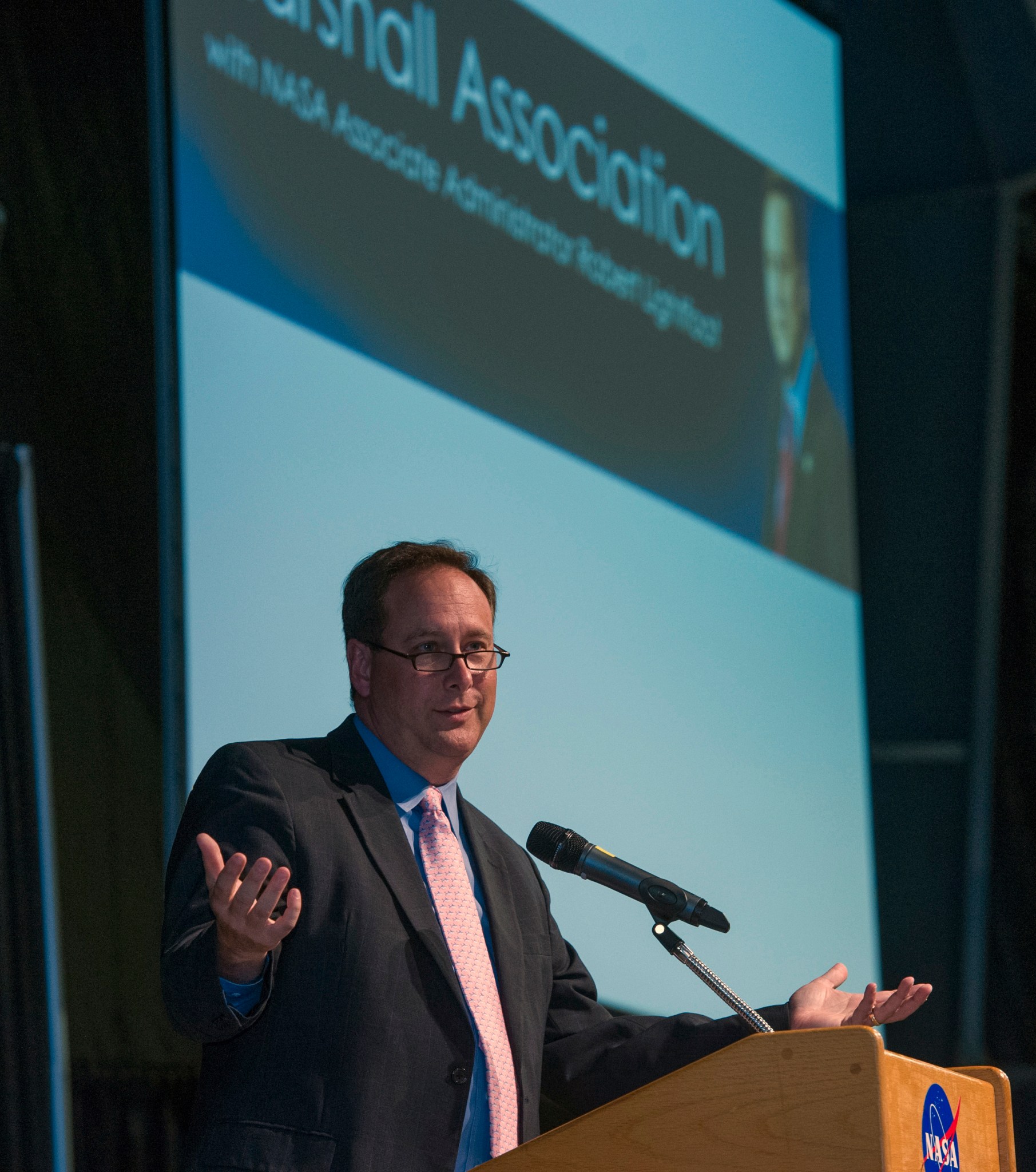
Russellville, Alabama, Rocket Team Wins International Challenge; Tours Marshall
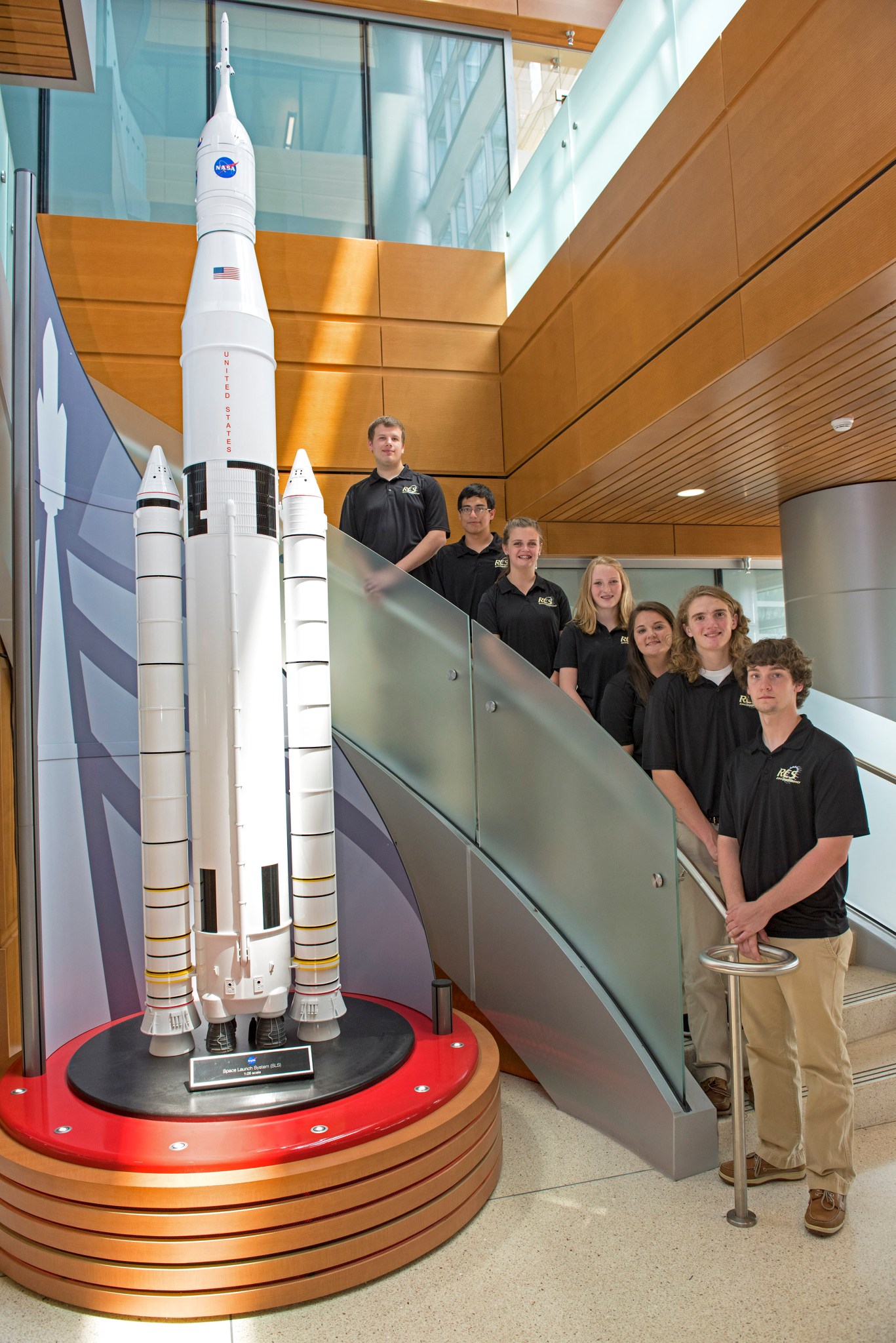
Marshall Hosts Advanced Rocketry Workshop for Student Teams
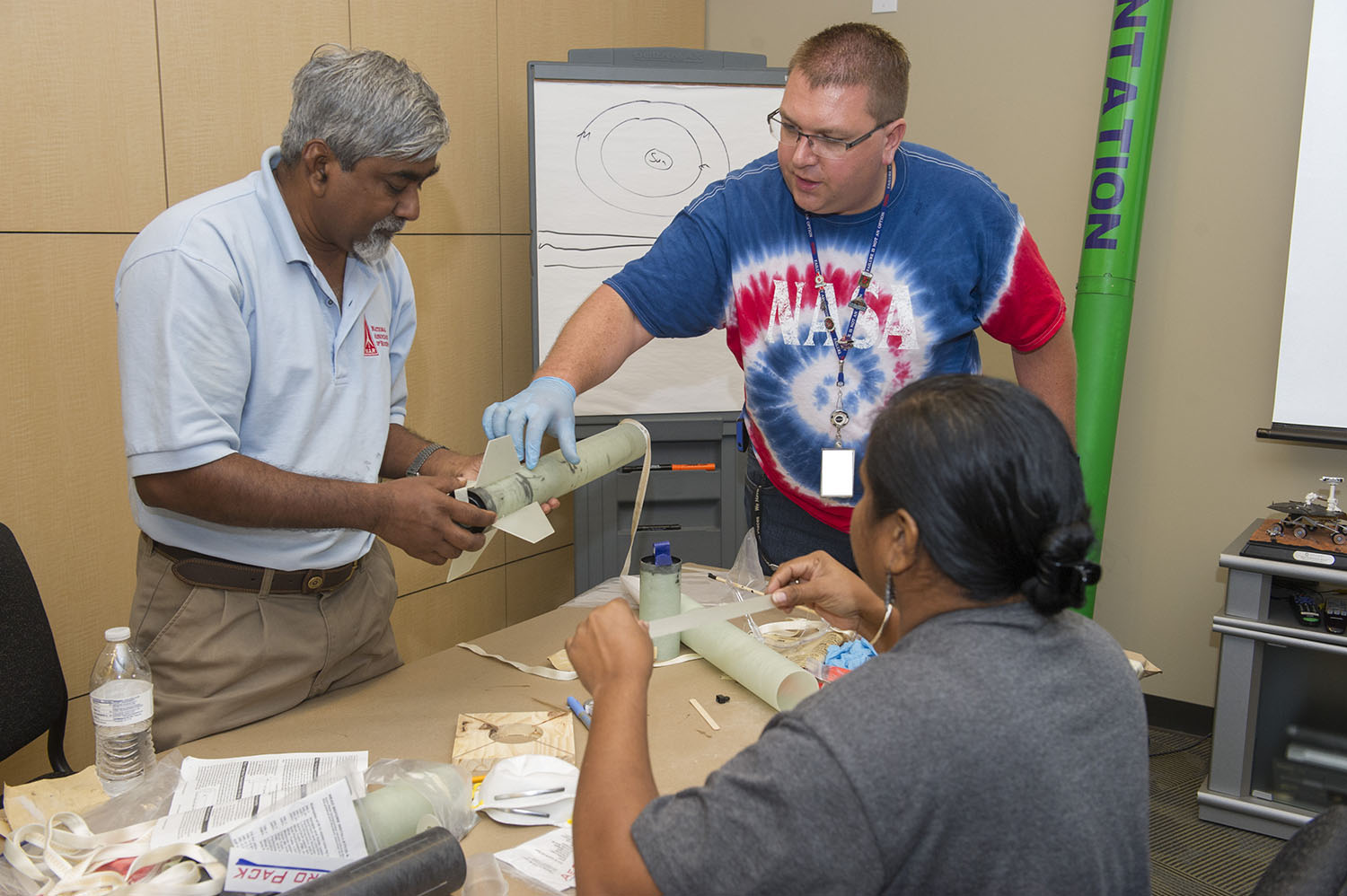
New Pluto Discoveries and Images Featured On ‘This Week @NASA’
A July 24 update at NASA Headquarters of new images and scientific discoveries from NASA’s New Horizons flyby of the dwarf planet Pluto is featured in the latest edition of “This Week @NASA,” a weekly video program broadcast nationwide on NASA-TV and posted online.
The images reveal a haze in Pluto’s sunlit atmosphere extending 80 miles above the surface – much higher than expected. Models suggest that the haze forms when ultraviolet sunlight breaks apart methane gas.
Additional imagery shows evidence that exotic ices have flowed – and may still be flowing – across Pluto’s surface, similar to the types of glacial movement found on Earth. This unpredicted sign of present-day geologic activity was detected in Sputnik Planum, an area in the western part of Pluto’s heart-shaped Tombaugh Regio.
Additionally, new compositional data from the spacecraft’s Ralph instrument indicate that the center of Sputnik Planum is rich in nitrogen, carbon monoxide, and methane ices. New Horizons is part of NASA’s New Frontiers program and is managed by NASA’s Marshall Space Flight Center.
View this and previous episodes at “This Week @NASA“ or at https://www.youtube.com/user/NASAtelevision.



























